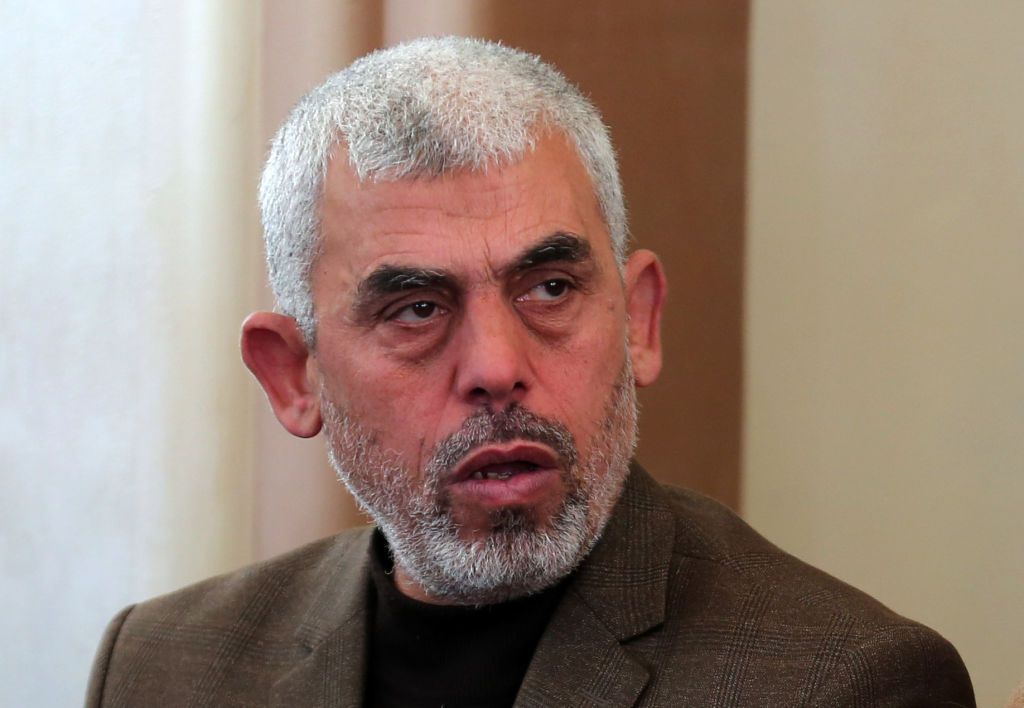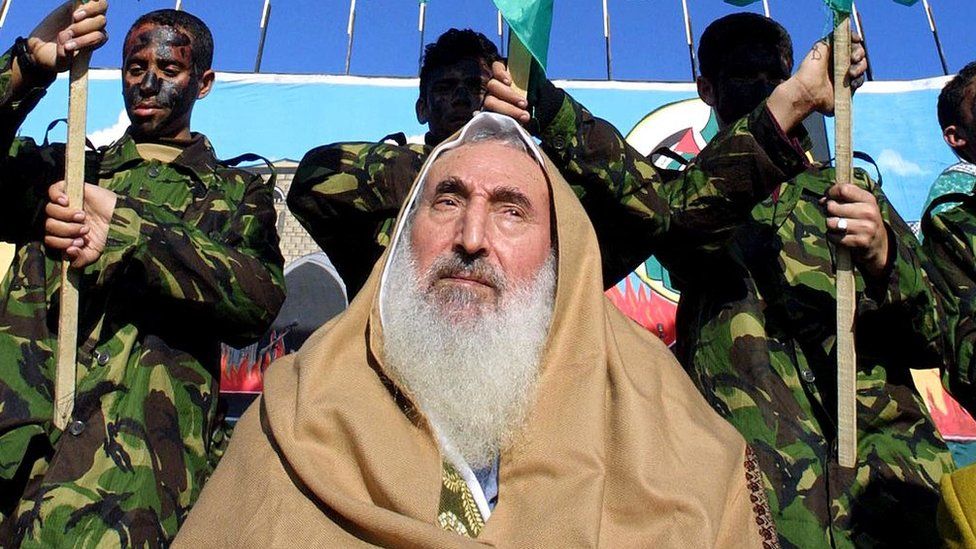Historical Context and Leaders

The relationship between Israel and Hamas has been marked by conflict and tension since Hamas’s emergence in the 1980s. Both sides have deep historical grievances and competing claims to the same territory, leading to a complex and often volatile dynamic. Understanding the historical context and evolution of Hamas leadership is crucial to comprehending the ongoing conflict.
Historical Relationship
The conflict between Israel and Hamas is rooted in the Israeli-Palestinian conflict, a complex and long-standing struggle over territory and identity. Hamas, founded in 1987, emerged as a major force in the Palestinian territories during the First Intifada, a Palestinian uprising against Israeli occupation. The group’s charter calls for the destruction of Israel and the establishment of an Islamic state in all of Palestine.
Key events in the historical relationship include:
- First Intifada (1987-1993): The uprising saw Hamas emerge as a significant player, challenging both the Israeli occupation and the Palestine Liberation Organization (PLO).
- Oslo Accords (1993-1995): The Oslo Accords aimed to create a two-state solution, with Israel and a Palestinian state coexisting peacefully. However, Hamas rejected the accords, viewing them as a betrayal of the Palestinian struggle.
- Second Intifada (2000-2005): The second Intifada, triggered by the failure of the Oslo process, saw Hamas launch numerous attacks against Israeli targets.
- Hamas’s Election Victory (2006): Hamas won the Palestinian parliamentary elections in 2006, leading to a power struggle with the PLO and a subsequent Israeli blockade of the Gaza Strip.
- Gaza Wars (2008-2009, 2012, 2014): Multiple wars between Israel and Hamas have occurred in the Gaza Strip, resulting in significant civilian casualties and destruction.
Evolution of Hamas Leadership
Hamas leadership has evolved over time, reflecting changes in the political landscape and the group’s strategic priorities. Prominent figures in Hamas history include:
- Sheikh Ahmed Yassin (1937-2004): Founder and spiritual leader of Hamas, Yassin advocated for armed resistance against Israel. He was assassinated by Israel in 2004.
- Khaled Mashal (born 1956): Current head of Hamas’s political bureau, Mashal is known for his pragmatic approach and his focus on building international support for Hamas.
- Ismail Haniyeh (born 1962): Current head of Hamas’s government in Gaza, Haniyeh is seen as a more hardline figure than Mashal.
Leadership Styles, Israel hamas leader
Past and present Hamas leaders have exhibited different leadership styles.
- Sheikh Ahmed Yassin: Yassin was a charismatic and inspirational figure who emphasized religious devotion and armed struggle. His leadership was characterized by a strong emphasis on religious ideology and a willingness to confront Israel militarily.
- Khaled Mashal: Mashal’s leadership has been marked by a more pragmatic approach, focusing on building alliances and seeking international recognition. He has also been more willing to engage in negotiations with Israel, albeit with the goal of achieving Palestinian statehood.
- Ismail Haniyeh: Haniyeh’s leadership is characterized by a more hardline stance towards Israel. He has been a vocal critic of the Oslo Accords and has supported the use of violence against Israel.
Political and Ideological Landscape: Israel Hamas Leader

Hamas, the Islamic Resistance Movement, is a Palestinian political and militant organization with a complex and evolving ideological landscape. It has undergone significant transformations since its inception in 1987, navigating the turbulent political landscape of the Palestinian territories and the broader Middle East. Understanding the current political and ideological landscape of Hamas is crucial for comprehending its goals, internal dynamics, and its position within the Palestinian national movement.
Hamas’s Goals and Objectives
Hamas’s political goals and objectives are articulated in its charter, which was adopted in 1988. The charter Artikels a vision for an independent Palestinian state encompassing all of historic Palestine, including territories currently under Israeli control. It advocates for the establishment of an Islamic state governed by Sharia law, and rejects any negotiated settlement with Israel that does not include the complete withdrawal from all occupied territories.
Hamas’s objectives can be summarized as follows:
* The Liberation of Palestine: Hamas considers the entirety of historic Palestine, including territories currently under Israeli control, as its rightful homeland. Its ultimate goal is to liberate all of Palestine from Israeli occupation.
* Establishment of an Islamic State: Hamas aims to establish an Islamic state governed by Sharia law in the liberated territories. This vision is rooted in the belief that Islam provides the framework for a just and equitable society.
* Resistance to Israeli Occupation: Hamas views armed resistance as a legitimate and necessary means to achieve its goals. It has engaged in numerous armed confrontations with Israel, including the First and Second Intifadas, and continues to carry out attacks against Israeli targets.
* Rejection of Recognition of Israel: Hamas rejects any negotiated settlement with Israel that does not include the complete withdrawal from all occupied territories. It does not recognize Israel’s right to exist, and considers it an illegitimate entity.
Internal Dynamics and Factions
Hamas is a complex organization with a multifaceted internal structure. While it is generally considered a unified entity, there are internal dynamics and potential factions that can influence its decision-making and actions.
One key internal dynamic within Hamas is the tension between its political and military wings. The political wing, led by Ismail Haniyeh, focuses on diplomacy and governance, while the military wing, known as the Izz ad-Din al-Qassam Brigades, is responsible for armed resistance. This tension has been particularly evident in recent years, as Hamas has sought to balance its commitments to armed struggle with its responsibilities as the governing authority in Gaza.
Another internal dynamic is the potential for factionalism based on ideological differences. While Hamas is generally united around its core principles, there have been disagreements within the organization on issues such as the use of violence, the role of women in society, and the relationship with other Palestinian factions. These disagreements have not led to significant divisions within Hamas, but they have the potential to surface in times of crisis.
Comparison with Other Palestinian Political Groups
Hamas’s ideology distinguishes it from other Palestinian political groups, such as Fatah, the Palestine Liberation Organization (PLO), and the Popular Front for the Liberation of Palestine (PFLP).
Fatah: Fatah, the dominant faction within the PLO, advocates for a two-state solution, recognizing Israel’s right to exist within secure borders. Fatah has historically focused on diplomacy and negotiation, although it has also engaged in armed struggle in the past.
PLO: The PLO, a broad coalition of Palestinian factions, has historically advocated for the establishment of a Palestinian state in the West Bank and Gaza Strip. The PLO has undergone significant transformations over the years, and its current stance on the two-state solution and the recognition of Israel is more nuanced.
PFLP: The PFLP is a Marxist-Leninist organization that advocates for the complete liberation of Palestine from Israeli occupation. The PFLP rejects any negotiated settlement with Israel and continues to engage in armed struggle.
Hamas’s rejection of the two-state solution and its commitment to the establishment of an Islamic state differentiate it from Fatah and the PLO. Its emphasis on armed resistance and its refusal to recognize Israel’s right to exist set it apart from all other Palestinian political groups.
International Relations and Global Impact

Hamas’s international relations are complex and multifaceted, shaped by its political ideology, regional context, and global power dynamics. Its actions have significant implications for regional stability and international security, prompting both condemnation and support from various actors. Understanding Hamas’s international relations is crucial for comprehending its political strategies, regional influence, and global impact.
Relationships with Other Countries and Organizations
Hamas’s relationships with other countries and organizations are often characterized by a combination of political alliances, ideological solidarity, and pragmatic considerations.
- Iran: Iran is a key supporter of Hamas, providing financial, military, and political support. Both share a common enemy in Israel and a commitment to the Palestinian cause. Iran’s influence on Hamas has been significant, particularly in shaping its military capabilities and strategic outlook.
- Qatar: Qatar has played a prominent role in mediating between Hamas and Israel, facilitating prisoner exchanges and providing financial assistance to Gaza. Its relationship with Hamas is driven by a desire to maintain stability in the region and enhance its regional influence.
- Turkey: Turkey has established strong ties with Hamas, providing humanitarian aid and supporting its political efforts. The relationship is rooted in shared Islamic values, a common struggle against Israel, and a desire to promote a more active Turkish role in the Middle East.
- Egypt: Egypt’s relationship with Hamas has been complex and fluctuating. While Egypt has often sought to control Hamas’s activities and prevent its influence from spilling over into its territory, it has also provided humanitarian assistance and engaged in diplomatic efforts to mediate between Hamas and Israel.
- Arab League: The Arab League has generally supported Hamas’s right to self-determination and its resistance to Israeli occupation. However, there are divisions within the Arab League on how to best support Hamas and engage with Israel.
Global Impact of Hamas’s Actions
Hamas’s actions have a significant impact on regional stability and international security.
- Regional Stability: Hamas’s armed conflicts with Israel have led to prolonged periods of violence and instability in the Gaza Strip and surrounding areas. These conflicts have also contributed to tensions between Israel and its Arab neighbors, exacerbating regional instability.
- International Security: Hamas’s use of rockets and other weapons against Israel has raised concerns about the potential for escalation and regional conflict. Its activities have also been linked to the spread of extremist ideologies and the recruitment of foreign fighters.
Challenges and Opportunities Faced by Hamas in the International Arena
Hamas faces a number of challenges and opportunities in the international arena.
- International Isolation: Hamas is designated as a terrorist organization by many countries, limiting its access to international support and resources.
- Political Divisions: Hamas is often criticized for its violent tactics and its rejection of a two-state solution. These divisions have weakened its international standing and hampered its efforts to build broader support.
- Economic Constraints: Hamas faces significant economic challenges, exacerbated by the Israeli blockade of Gaza and the ongoing conflicts. This has limited its ability to provide essential services to its population and to improve living conditions.
- Opportunities for Dialogue: Hamas has shown a willingness to engage in dialogue with Israel and other actors, seeking to achieve a lasting peace. These efforts have opened opportunities for international engagement and potential breakthroughs.
Israel hamas leader – The ongoing conflict between Israel and Hamas has brought a sense of urgency to the region, much like the rapid development of tropical storm Debby into a hurricane. The unpredictability of both situations underscores the need for swift and decisive action to mitigate potential harm.
Just as hurricane preparedness is crucial for communities in the storm’s path, diplomatic efforts and humanitarian aid are vital to alleviate suffering in the Israeli-Palestinian conflict.
The ongoing conflict between Israel and Hamas has drawn global attention, highlighting the complexities of the region. Amidst this volatile situation, the global community is also grappling with the ongoing COVID-19 pandemic, a challenge that has underscored the importance of international cooperation and understanding.
The World Health Organization ( who covid 19 ) has been instrumental in coordinating global efforts to combat the virus, emphasizing the need for equitable access to vaccines and treatment. As the conflict in the Middle East continues, the impact of the pandemic on both sides remains a critical concern, underscoring the interconnected nature of global challenges.
